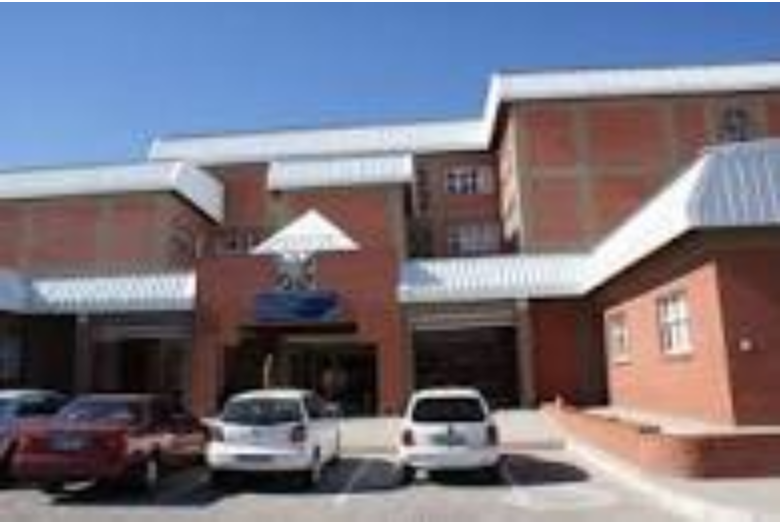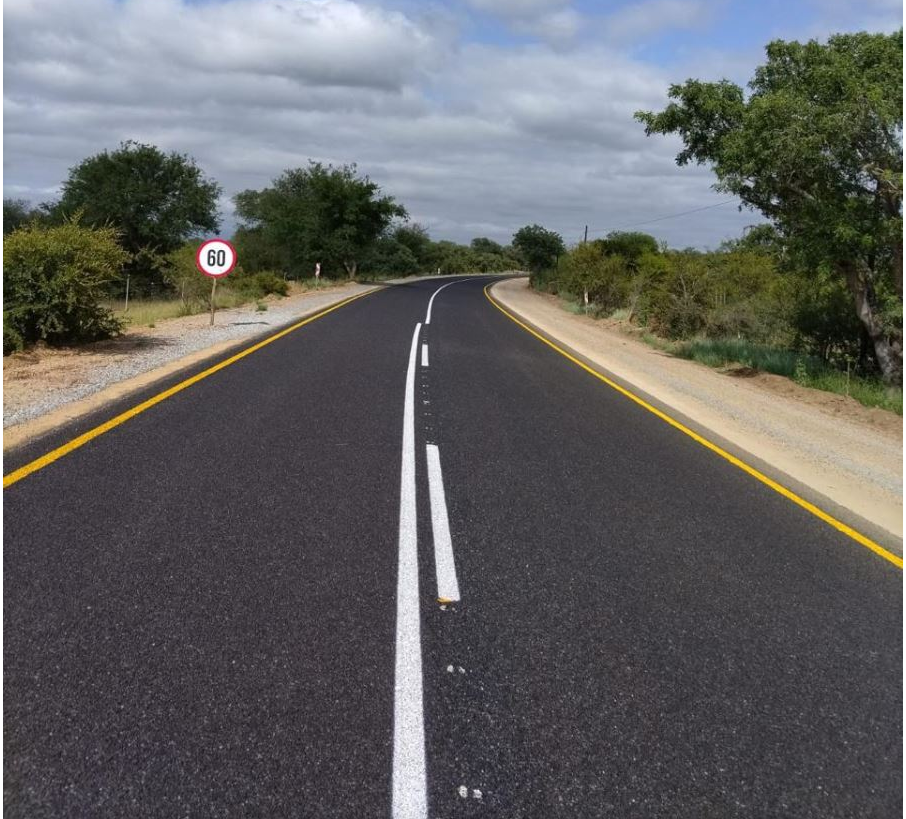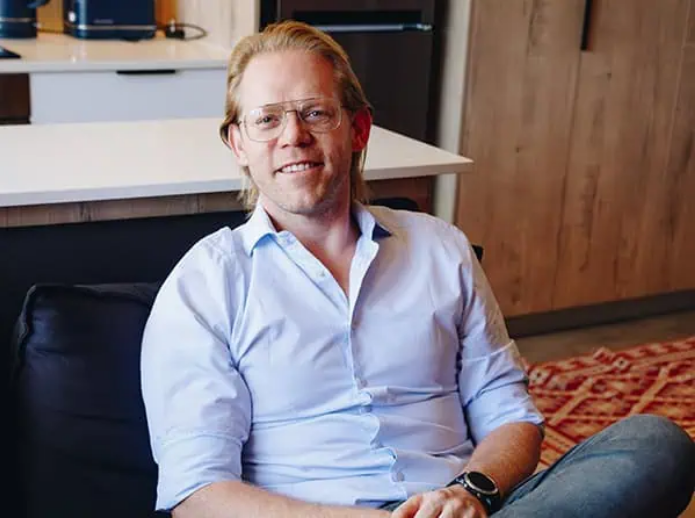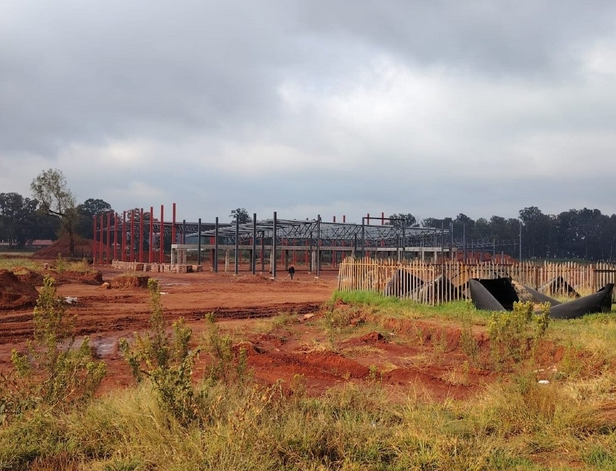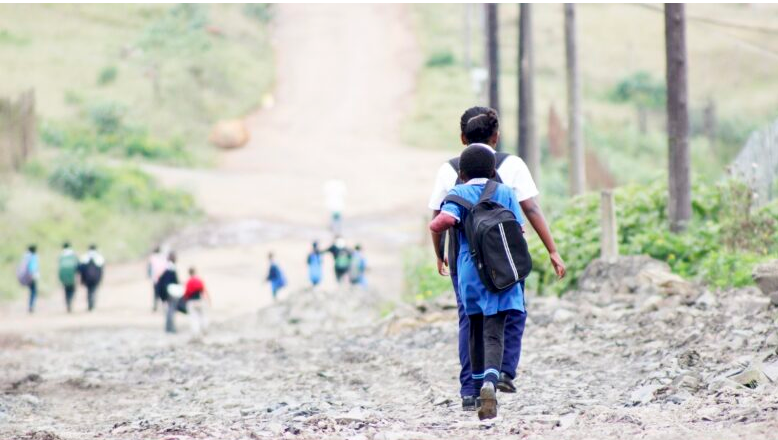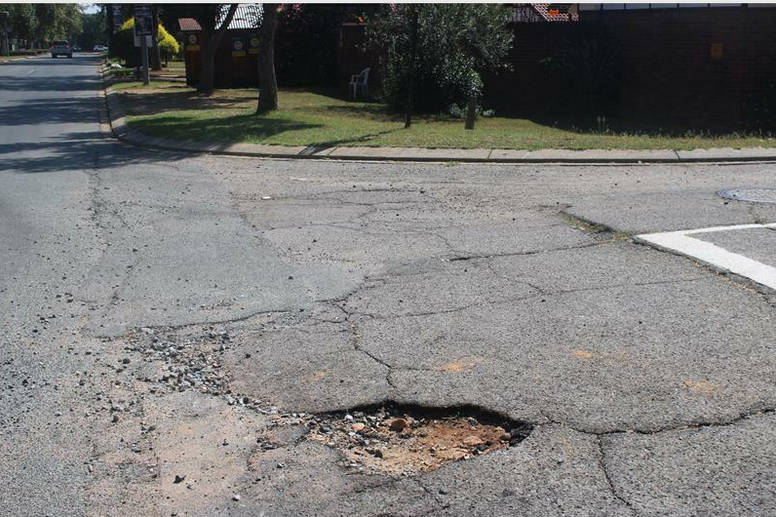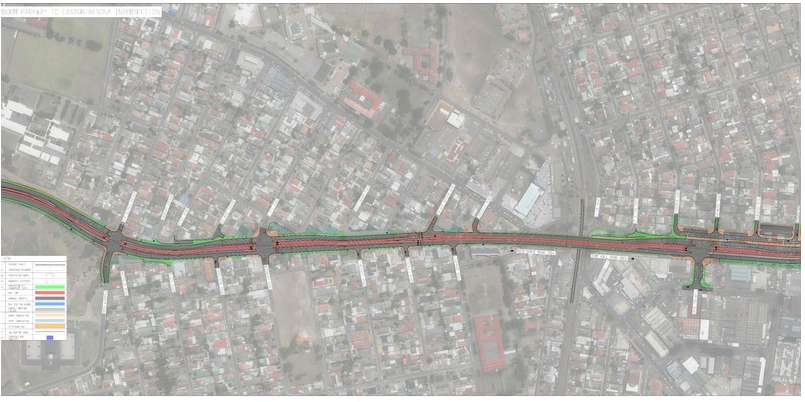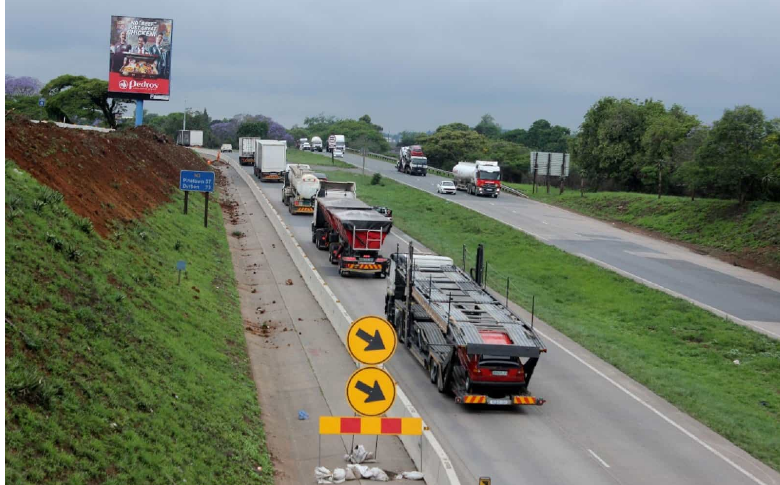Investors show appetite for mining projects on ‘largely unexplored’ continent

08-02-2019
Read : 76 times
Moneyweb
Source
‘There are bankable projects out there, both in South Africa and the rest of the continent.’
CIARAN RYAN: I’m sitting with Greg Webber of Nedbank Corporate and Investment Banking, welcome Greg.
GREG WEBBER: Thank you Ciaran.
CIARAN RYAN: To kick off can you just tell us a little bit about your time with Nedbank and what is your position there?
GREG WEBBER: Ciaran, I’ve been with the Nedbank Group for almost 18 years now, the first seven years of which were spent in our London office, and the most recent 11 years have all been involved in mining finance. I am now the co-head of the mining and resources team at Nedbank CIB.
CIARAN RYAN: We’ve got the Mining Indaba in Cape Town this week, so can we start off by taking a look at the general state of mining in South Africa, which seems to have improved somewhat in the last year, particularly with the appointment of Gwede Mantashe as the mining minister and the issue of the new Mining Charter. Are these better times for mining in South Africa and why would that be?
GREG WEBBER: Relatively speaking, compared to where we have come from, it’s definitely better times. We’ve come from a period of uncertainty and investment into a more stable period. My sense is that the industry at the moment is in a relatively stable position, commodity prices are at sustainable levels and some of the regulatory uncertainty has been removed by the minister in the Mining Charter III, but over and above that there has also been a much more collaborative approach between the various stakeholders in the industry, which is leading to a more positive outlook. No doubt we are in a far better space than we were prior to minister Mantashe but challenges remain.
CIARAN RYAN: So if this is a better time for mining, is it also a better time for M&A activity in mining would you say?
Read: Mining goes back to bigger deals, consolidation
GREG WEBBER: Absolutely, you need a bit of a positive vibe around to attract buyers. If you are in a negative space there are always sellers. But you need a positive vibe around to attract the buyers, so if you’ve got an equal number of willing sellers and willing buyers then you are going to have M&A activity. For a long time there were sellers but there weren’t buyers. At the moment we’re probably moving towards a period where we have willing participants on both sides of the transaction. So we’re certainly hopeful for increased M&A activity.
Safety – the number one issue
CIARAN RYAN: Let’s turn to some of the operational issues facing miners. For example, there seem to have been some improvements to safety over the years and that, of course, is a huge focus for trade unions. Is that still a big issue or is it one of the biggest issues that miners are facing?
GREG WEBBER: Absolutely, safety is probably the number one issue for most management teams on mines. Yes, you’re correct; our statistics have been improving as an industry consistently over the years. However, of late the rate of improvement seems to have slowed and I would think that there’s a concern within the sector as to whether or not we are reaching a plateau and maybe further initiatives are required to break through that plateau. It’s a massive challenge for the sector and, to be honest, I believe we need to find new and more efficient mining methodologies; we need to invest in research and development and find some more innovative ways of doing things, failing which we may plateau trying to do things the same way.
CIARAN RYAN: Let’s look at some of the challenges facing miners, particularly costs. Mines are facing yet another electricity price increase and there have been some very disruptive strikes over pay. These, of course, are two of the biggest costs in mining – electricity and labour. What’s the outlook generally for mining companies when it comes to costs?
GREG WEBBER: I don’t see electricity or labour costs not increasing at above inflation levels in the foreseeable future. So I think the outlook for mining companies as far as those costs are concerned is pretty scary. My view is that it will continue. I can’t see how the mines will have to fund a portion of the cost of the mismanagement of Eskom over the recent times, they’ll have to fund their share of that and labour is going to continue to demand above inflationary increases. What that will lead to is yet more focus on cost efficiency and portfolio optimisation by the mining companies, retaining their low-cost operations and restructuring their higher-cost operations. Again that leads into the R&D and the innovation-type thinking; are there better more efficient ways we can do things as an industry in South Africa to continue to make us sustainable.
CIARAN RYAN: I think one of the words you used there was plateau when we were talking about safety. This is something we heard in mining for a long, long time is the campaign to bring down costs. Now, one gets a sense that – is there a point beyond which you cannot go? In other words, you have reached a plateau, you have exhausted every available opportunity to cut down costs but having said that, business always comes up with a better way of doing things, would you agree with that?
GREG WEBBER: Absolutely, I’m sure if you go way back in history mines would have been facing cost pressures and it would have been looking very difficult to reduce costs from where they were. But miners are resilient and they find a way year after year after year of becoming increasingly efficient, better at what they do and doing it on a cheaper basis. So I am confident that our industry will continue to improve on its efficiency and productivity but it is, I believe, going to require some investment into R&D. I question whether sufficient investment in that area is happening.
Impact of illegal mining
CIARAN RYAN: Let’s turn for a minute to illegal mining. If you go out to the East Rand and you see them operating, the zama-zamas, as they call them, they are pretty much in broad daylight. I’m told there are about 30 000 to 40 000 illegal miners going underground every day. Is this having an impact on the legal mining sector?
GREG WEBBER: Without a shadow of a doubt it has an impact on our client base, and the most obvious impact is security cost. You have a criminal element inherent on your property and on your neighbouring properties, you are going to have to spend more on security, both above ground and underground. It also has an impact on productivity, to what extent is your workforce being interrupted or involved in those illegal mining activities and then – probably most importantly – safety: to what extent are shortcuts being taken underground by the illegal miners or in order to assist the legal miners from a safety perspective. So off the top of my head those three aspects would certainly be worrying to mine management.
CIARAN RYAN: Let’s turn for a minute to the quality of the ore bodies in South Africa and I know it’s hard to generalise but if we look at gold we see a steady long-term decline in the quality of ore bodies. So gold is definitely in its sunset years, maybe 30 or 40 years to go, would you agree with that and what about some of the other commodities that we mine in South Africa?
GREG WEBBER: You’re right, it is difficult to generalise. If we look at gold I think the ore bodies are still there from a quality perspective, it’s just where they are, the depth at which they are located, the complexity thereof. So absolutely, it’s becoming more expensive, more difficult, to get to those ore bodies. And for that reason I do over the longer-term foresee a continuing decline in gold production in South Africa and a move towards tailings retreatment. Barring again any dramatic change in the way we do things in our deep level mines, I think we are ultimately going to be priced out of the global gold market and we’re going to see a shift towards tailings retreatment. We’re already seeing it with the likes of Pan African Resources, DRDGold and Harmony Gold, all paying particular attention to tailings retreatment as part of their future.
CIARAN RYAN: This brings us to banking, which is what you are involved in and, from a banking perspective, what’s the mining project pipeline looking like?
GREG WEBBER: It’s looking a little thin in South Africa, it’s fair to say, as it has done for quite a few years now, in terms of projects that are coming to the market for pure project financing. That said, there are still a number of projects that are currently under development in the South African mining sector but are not necessarily being funded by ring-fenced bank financing. So they’re being funded by bigger companies off their operating cash flows from other operations or from other sources. So the project activity is there, the niche where the banks would play for your more junior to mid-tier companies, building their first or their second project, that portion of the sector has largely gone missing but on the rest of the continent there is quite a lot of activity in that sector. We’re seeing quite a lot of project activity on the rest of the continent but relatively little in South Africa from a banking perspective.
CIARAN RYAN: Just drill down into that a little bit then and explain why South Africa is looking so thin in terms of projects, whereas the rest of the continent is looking a bit richer – why is that?
GREG WEBBER: In terms of project finance opportunities it’s probably a few reasons. One, as I said, the junior to mid-tier market in South Africa is relatively small. The larger companies tend to dominate the market in South Africa and they are the ones developing most of the projects. There could be a number of reasons for that, the hurdles to entry for a junior to mid-tier company in South Africa are quite high from a regulatory perspective, also from a cost of production, productivity, efficiency perspective, it’s often seen as easier – if you are that size of company – to maybe develop projects on the rest of the continent. In terms of the rest of the continent there is still appetite from mining companies particularly based in Canada, London, Australia, for projects on the continent. The continent remains relatively unexplored, which means that there is space for both the larger companies and the junior to mid-tiers to participate, broadly speaking.
Bankable mining projects in SA
CIARAN RYAN: Are there still very bankable projects out there and can you list a few of them?
GREG WEBBER: There are bankable projects out there, both in South Africa and in the rest of the continent. As I say, in South Africa there are a lot that are under development at the moment that are bankable but that have not necessarily been project financed specifically. We can take for example in the platinum sector we’ve got Northam’s Booysendal development on the eastern limb, we’ve got Royal Bafokeng Platinum’s Styldrift development, in the gold space we’ve got Pan African Resources’ Elikhulu tailings project that they have recently commissioned.
In the coal space, Universal Coal has been busy with some projects, Exxaro is building its Belfast project, we’ve got Vedanta with its large zinc project in the Northern Cape. Even in the diamond space there’s been capital invested heavily by the likes of Petra Diamonds at both its Cullinan and Finsch mines in terms of expanding underground. De Beers is spending a lot of money on its Venetia underground expansion. Richards Bay Minerals are looking at spending money, it’s a Rio Tinto operation in Kzn, looking at spending money on a Zulti South expansion.
So absolutely, the projects are out there, the projects are being developed but, as I say, more often than not by well-established companies, off the back of existing cash flows and some bank funding.
CIARAN RYAN: We know there’s been a thinning out of banks participating in mining finance over the years – can you explain what’s been going on and why this is?
GREG WEBBER: My view is in order to be successful in a mining finance franchise you need experience and you need a long-term view. This is a very cyclical industry and you need to have lived through a few cycles, and seen the ups and the downs in order to build a sustainable business in mining finance. My opinion is the mistakes some institutions make is when it’s good times they are all-in but when they hit a couple of speed bumps they withdraw and because of that you don’t have a consistent team that are building up experience through thick and thin, earning their stripes and then taking their lashes. Through that you are going to struggle, if you are either all in or all out in this sector you are going to struggle, you’re not going to build up the relevant expertise and experience that you need to recognise a bull market or a bear market when you see one.
CIARAN RYAN: Nedbank Corporate and Investment Banking has built up quite a strong brand in mining over the years. Can you give us a sense of your strength and what kinds of skills you need to be a player in this segment of the market and then also just wrap up with an outlook for the next couple of years.
GREG WEBBER: Linked to what I said in the past I believe the strength of our franchise lies in the people we have. We have a fairly large team of 16 people with a broad array of skillsets, some technical skills, metallurgists, geologists, engineers and financial skills. On average I’d say we’ve probably got 10 years of experience within our team per team member. So that talks to the point of having seen the cycles, having seen the upsides, the downsides and what we try to achieve is to maintain consistency through the cycles. So we don’t go over the top when it’s a bull run but equally we don’t withdraw and close the taps when the markets are a bit tight.
CIARAN RYAN: You’re talking here about financing a project?
GREG WEBBER: Financing, our approach to funding, our approach to risk in the sector. So we like to believe that we behave fairly consistently through the cycles and we like to think that our client base sees that as a reliable banking partner. That’s what I believe has led to our success in the sector. In terms of outlook, looking forward, I see the local market remaining in its current state of relative stability and that will mean that we will continue to service our clients in the local market, which forms the bedrock of our business in South Africa, and we’ll continue to look for … we’re looking at some project financing opportunities in South Africa at the moment that are at relatively early stage, due diligence processes. So I think our local business will remain pretty much as it has been and where we really are focusing from a growth perspective is on the rest of the continent. We have been successful over the last five to 10 years of building a brand and building a name in mining investor hubs such as Australia, Canada, London and it’s now up to us to capitalise on that and really grow the business that we’ve established on the rest of the continent in conjunction with our strategic partner, Ecobank.
CIARAN RYAN: Thanks Greg. That was Greg Webber of Nedbank Corporate and Investment Banking.
Recent News
Here are recent news articles from the Building and Construction Industry.
Have you signed up for your free copy yet?
